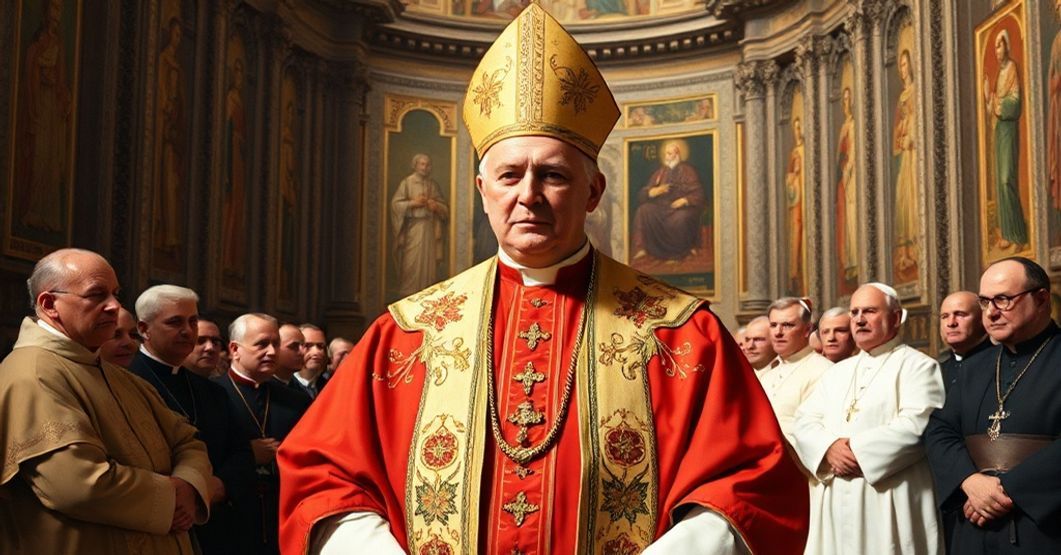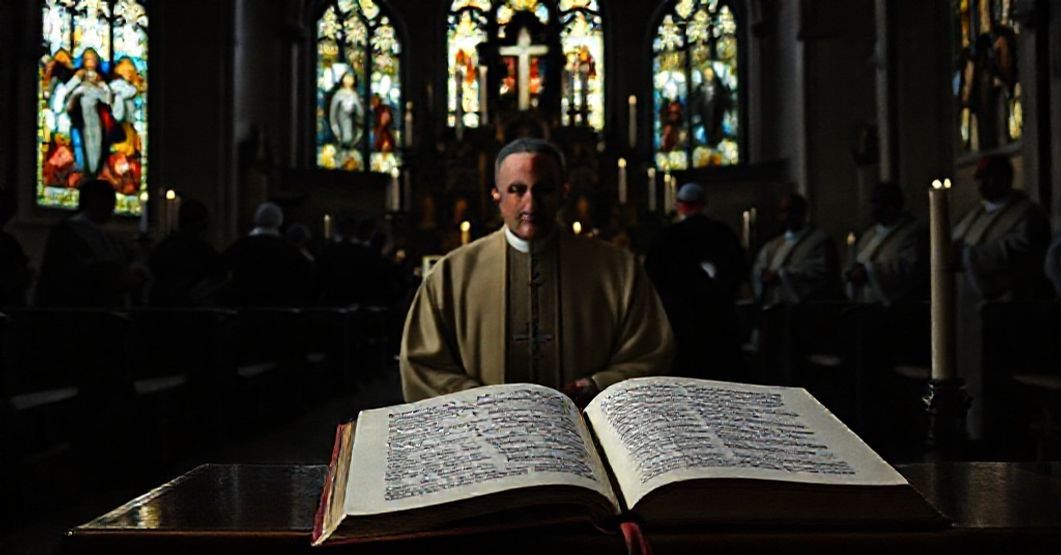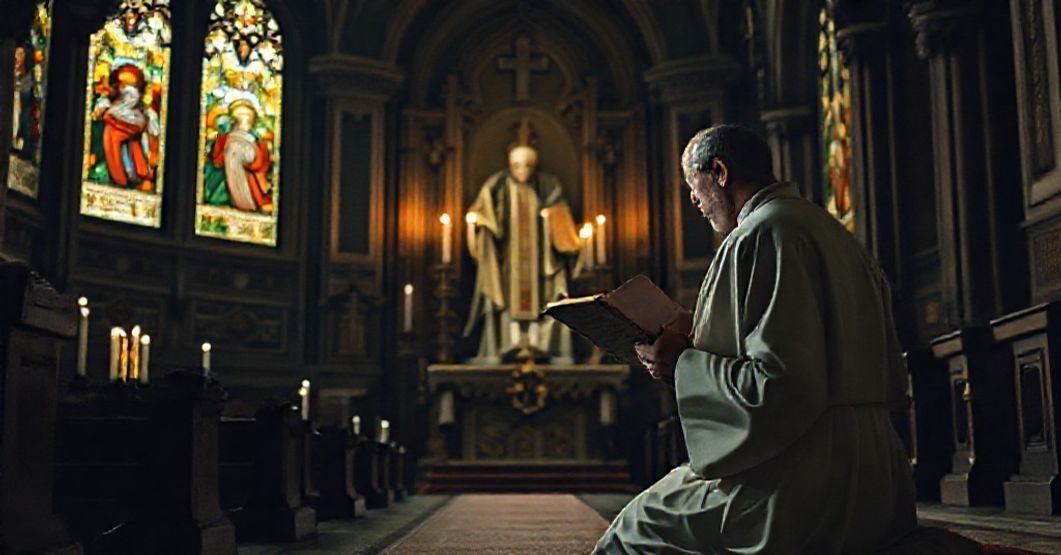Antipopes of the Antichurch



















Timeline of this heretical pontiff
Encyclical Letters
+ 15 posts1959
+ 7 posts1961
+ 4 posts1962
+ 2 posts1963
+ 2 postsApostolic Exhortations
+ 3 postsApostolic Constitutions
+ 93 posts1958
+ 6 posts1959
+ 87 postsMotu Proprio
+ 15 posts1958
+ 1 posts1959
+ 1 posts1962
+ 11 postsApostolic Letters
+ 151 posts1958
+ 4 posts1959
+ 63 posts1960
+ 78 posts1961
+ 1 posts1962
+ 4 posts1963
+ 1 postsSpeeches
+ 99 posts1958
+ 2 posts1959
+ 26 posts1960
+ 29 posts1961
+ 16 posts1962
+ 24 postsMessages
+ 6 posts1959
+ 4 postsHomilies
+ 4 postsLetters
+ 152 posts1958
+ 1 posts1959
+ 48 posts1960
+ 32 posts1961
+ 31 posts1962
+ 30 posts1963
+ 10 postsNot categorized
+ 1 posts1958
+ 1 postsNews feed


In primordio (1958.12.23)
At the beginning of his usurped reign, Roncalli (John XXIII) replies to the German hierarchy, praising their loyalty to Pius XII, solemnly assuring continuity of attachment to Germany, extolling German cultural virtues, invoking concordats, consoling Catholics under communist oppression and refugees, and bestowing a paternal blessing while presenting himself seamlessly as Peter’s successor and guarantor of ecclesial stability and civic cooperation. In reality, this letter is a genteel manifesto of the coming conciliar revolution: a smooth rhetorical veil covering the transfer from the Church of Christ to the emerging neo-church of humanist diplomacy and ecclesial betrayal.


Sacrae Laudis (1962.01.06)
Venerable brethren and beloved sons are called by John XXIII to unite in intensified recitation of the Divine Office as a “sacrifice of praise” for the “happy outcome” of Vatican II, presented as a “new Pentecost” and even a “new Epiphany,” with particular emphasis on clergy as mediators whose common prayer should prepare and sustain this conciliar event in hope of ecclesial “renewal” and adaptation of discipline to “the needs of this age.” The entire text, clothed in pious language and allusions to Bethlehem, the Magi, and the heavenly liturgy, functions, however, as a devotional-anesthetic to sanctify in advance the conciliar revolution and to conscript the sacred liturgy itself into serving an already predetermined programme of aggiornamento subversive of the unchanging Catholic faith.


Ad Petri cathedram (1959.06.29)
The encyclical Ad Petri cathedram, dated 29 June 1959 and issued by John XXIII, presents itself as a doctrinal and pastoral manifesto on “truth, unity, and peace,” linking the alleged perennial youth of the Church with the announced Roman Synod, the reform of canon law, and especially the future “ecumenical council.” It exalts religious journalism and modern media as instruments for truth, condemns religious indifferentism in words, calls for social harmony, class concord, and respect for authority, proposes an irenic appeal to “separated brethren” anchored in a highly visible threefold unity of doctrine, government, and worship in the Roman Church, and concludes with paternal exhortations to bishops, clergy, religious, laity, the suffering, the poor, migrants, and the “Church of silence.” All this is enveloped in a tone of optimistic humanism and programmatic “openness,” intended to inaugurate a new season in the life of the Church. In reality, this text is the polished theological manifesto of the conciliar revolution, preparing in pious Latin the demolition of the social Kingship of Christ, the dilution of dogma, and the construction of the neo-church as a paramasonic project clothed in Catholic vocabulary.


Sacerdotii Nostri Primordia (1959.08.01)
The document Sacerdotii Nostri Primordia, issued in Latin by antipope John XXIII on 1 August 1959 for the centenary of the death of St. John Mary Vianney, is presented as an exhortation on priestly holiness, asceticism, Eucharistic devotion, pastoral zeal, and the role of the Curé of Ars as model and patron of priests. It praises poverty, chastity, obedience, prayer, sacrifice, catechesis, and the centrality of the Most Holy Sacrifice, while weaving together references to Pius X, Pius XI, and Pius XII to ground its appeals. Yet precisely in this apparently edifying tribute, we detect the carefully camouflaged beginning of a program that will, under a pious mask, separate priestly spirituality from doctrinal militancy, disarm the clergy facing liberalism and Modernism, and prepare the psychological and theological terrain for the conciliar revolution that will soon overthrow the social Kingship of Christ and the visible structures of the Church.
Varia
Announcement:
– News feed –implemented
– Antipopes separate web sites with their all documents refutation – in progress
